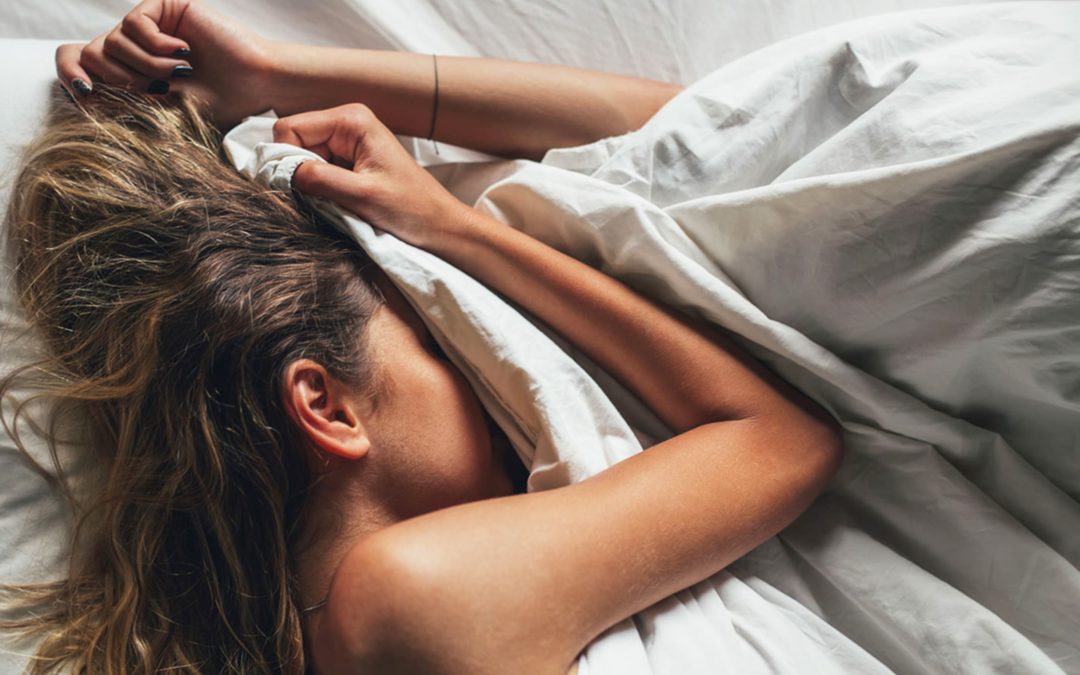(Image by Studio Firma / Stocksy)
By Sarah Regan / April 30, 2021
Every night when we first start nodding off, we enter stage 1 sleep. One of the four sleep stages, stage 1 sleep sets us up for stage 2 sleep, slow-wave sleep, and of course, REM sleep, where we dream. Here’s everything you need to know about this light sleep stage, including how to drop into it more quickly.
What happens during stage 1 sleep?
Stage 1 is the first light sleep stage, which is “almost a transition from waking to sleep,” explains doctor of chiropractic and functional medicine expert Stacie Stephenson, D.C., CNS. “You may drift in and out of sleep, aware of your surroundings one minute, experiencing dreamlike sensations the next.”
“During this stage, your brain is producing slow theta waves, and you are easy to awaken,” Stephenson adds. Here are a few things that happen as you enter into this stage:
- You slowly begin to drift off.
- Your brain begins producing slow theta waves.
- You may feel like you’re falling and jerk yourself awake (a sensation called hypnic myoclonia).
- You may experience dreamlike phenomena, such as hearing things (called hypnagogic hallucination).
What is the purpose of stage 1 sleep?
In the grand scheme of your sleep, not all that much happens in stage 1. Its main function is to prepare you for stage 2, wherein your body temperature, heart rate, and blood pressure decrease, and you actually lose consciousness. You’re not fully asleep yet in stage 1, and if you “wake up,” you’re likely aware you were only just starting to doze off.
Most of the time, stage 1 only happens once at the beginning of the night, unless you happen to wake up in the middle of the night and don’t fall back asleep right away. Once you reach stage 2, you move into stage 3, and then back to 2, before entering REM sleep. After REM sleep, you go into stage 2 sleep again, repeating the cycle throughout the night
How much time should I be spending in it?
“Stage 1 is quite short—it usually only lasts five or 10 minutes,” Stephenson tells mbg. Not to be confused with how long it takes you to wind down, once you’re truly in stage 1, it shouldn’t take long to then enter stage 2.
While it’s hard to know for sure without the help of a sleep tracker, Stephenson notes that stage 2 sleep is where people spend the majority of the night.
Things that can interrupt stage 1 sleep.
Because you’re only just beginning to drift in and out of consciousness, it’s very easy to be woken up in stage 1. According to Stephenson, “Stage 1 sleep is so close to being awake, neurologically, that you can pop in and out of it easily.”
As you progress through the stages, you’ll become less and less aware of your surroundings, making it harder to wake up. “Stage 2 is harder to wake up in, and when someone is in stage 3, sometimes called deep sleep, it can be quite difficult to wake them up,” Stephenson says, adding, “this is the stage during which sleepwalking tends to happen.”
A few examples of common stage 1 disturbances:
- A partner, pet, or child talking to you or touching you
- Physical discomfort, such as restless limbs or being too warm
- An abrupt noise outside or in your home
- Feeling like you’re falling, aka hypnic myoclonia
- Dreamlike hallucinations, aka hypnagogic hallucination
How to get better stage 1 sleep:
1. Fine-tune your space.
“The environment in which you sleep can make a big difference in sleep latency, which is the term for how long it takes to fall asleep,” Stephenson explains to mbg.
Things like clutter and noise, as well as factors like lighting and temperature, all play into how quickly we’re able to doze off. Minimize clutter and noise, keep your bedroom around 65℉, and start dimming the lights in your home well before bedtime. “Remember CDCQ,” Stephenson adds, “clean, dark, cool, and quiet.”
2. Incorporate a magnesium supplement.
Incorporating a supplement, such as mbg’s sleep support+ may help you unwind faster, as well as relax the body and mind.* The formula includes magnesium, which has been found to promote a steady state of relaxation for deep and restorative sleep, as well as pharmaGABA and jujube, which have both been found to support sleep quality.*
3. Manage your stress.
And lastly, Stephenson notes that many people often have trouble falling asleep because they are worrying about things, “so it may help to deal with those racing thoughts by organizing them.” For example, writing down your to-do list for the following day before bed has been found to help people fall asleep faster in research. You can also try relaxing activities such as a slow yoga flow or a bedtime meditation.
The bottom line.
While it may not seem like a big deal, without stage 1, we aren’t able to get into stage 2, or 3, or REM! There’s no question that those first few minutes of drifting off are important for the big picture of a good night’s rest. And with quality sleep being a pillar of our overall well-being, every stage matters—even if it only lasts five minutes.


